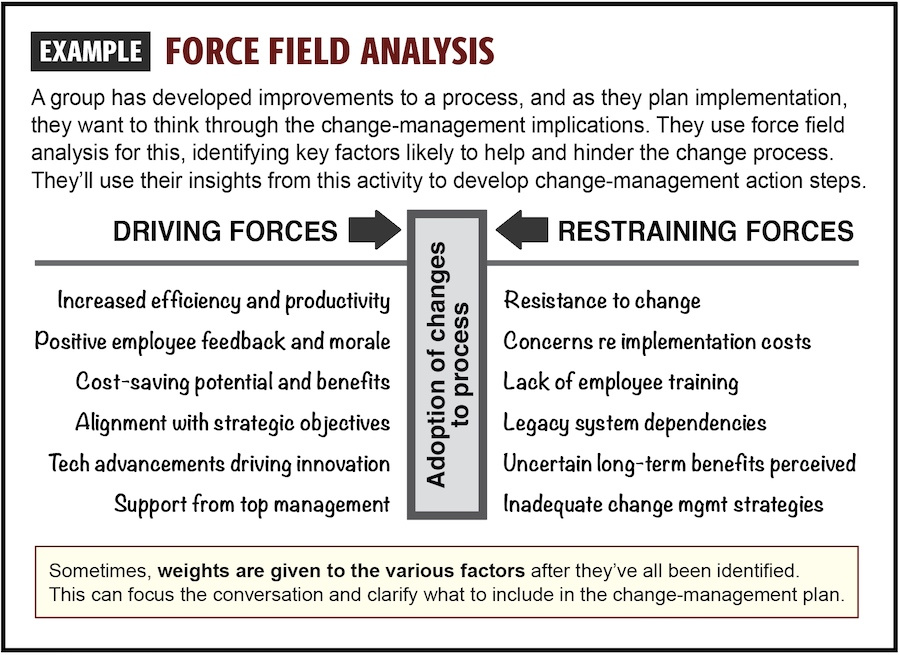Force Field Analysis can help you analyze problems by visually mapping the forces driving or resisting change. It highlights key factors influencing the situation, showing what to strengthen or reduce for better decision-making and targeted action.
Video: Whiteboard demo of force field analysis![]() (3:29 min.)
(3:29 min.)
Visual example:
Click to expand – will open in a new window
Step by step:
1.Identify the decision: Clearly articulate the decision you are considering. Make sure it's well-defined.
2. List the driving forces: Identify and list all the factors that are pushing toward the decision or change. These are the driving forces that are likely to support the implementation of the decision.
3. List the restraining forces: Similarly, identify and list the factors or forces that are holding back or opposing the decision or change. These are the negative aspects, obstacles, or challenges that might prevent or slow down the implementation of the decision.
4. Assign weights: Assign a numerical value or weight to each "force" based on its likely strength or impact. This can be a subjective assessment, using a scale like 1 to 5, where 1 is weak and 5 is strong.
5. Evaluate the balance: Calculate the total scores for both driving and restraining forces. Compare the totals to evaluate the balance between the forces pushing for the change and those resisting it. A higher score for driving forces indicates a greater likelihood of success, while a higher score for restraining forces suggests challenges and resistance.
6. Develop strategies: Based on the findings, brainstorm strategies or actions to strengthen the driving forces and weaken or overcome the restraining forces. Consider ways to leverage positive factors and address or mitigate challenges to facilitate the decision effectively.
7. If needed, refine the decision: Although force field analysis starts with the decision, the exercise of analyzing "driving" and "restraining" force might uncover a need to refine aspects of the decision. Circling back and revisiting the decision shouldn't be done lightly; you don't want to duplicate effort and waste time. But if there are newfound insights that tell the group to fine-tune its decision, definitely do so.
8. Implement and monitor: Put the decision into action and closely monitor the situation. Be prepared to adjust strategies if needed based on ongoing feedback and results.
|
• Use polls or reactions to assess the strength of each force. |